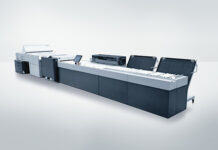Helping manufacturers to meet regulatory requirements and to provide a means of traceability, commercial printers can be an important part of production. However, when competing with other priorities on the production floor, they don’t always rank high on the list.
Manufacturers utilize coding technology because they have to, not because it is the core function of their business. When weighed against other needs on the production floor, worrying about the printing and coding device at the end of the packaging line is not always top of mind, but when it goes down, so does production. This creates urgency in identifying the cause and getting production back on line quickly. The top performing brands of commercial printers typically have a baseline level of reliability and total cost of ownership, but they are able to differentiate themselves by dedicated service coverage, fast first-time fix rates and consultative expertise far beyond the sale. Reliable printers are good, but reliable printers with excellent service are an even better choice in the long run.
Choose a service model with your best interest in mind
When evaluating the pros and cons of any service organization, it’s important to consider the type of service model being provided.
The depot model, which is a more traditional service method, requires a user to take the printer off their manufacturing line and remove any potential hazardous consumables (e.g. inks or solvents) before shipping that printer to the service center for maintenance or repair. After the printer is serviced and shipped back to the customer, it must be reinstalled, realigned, and recalibrated on their manufacturing line. Adding a layer of complexity, the manufacturer must also have a spare printer on hand to keep production running during repair of the downed printer, or risk an extended bottleneck in manufacturing.
With the growing functional capabilities of commercial printers, it is now logistically easier to have an onsite service model. This model instead brings a service engineer to your operation. While this can be more convenient for repairs, based on the staffing model used, a fast first-time fix, with the right person to do the job, may not always be achievable. Consider whether your printer vendor has service engineers that are responsible for both selling products and doing repairs? For vendors that have service engineers split their responsibilities between selling and servicing, it could be the case that the engineers are more motivated by incentive structures to sell equipment rather than fixing it. Other providers may outsource their service team, which has the potential to create competing priorities, as well delayed communication and lengthened service response times. and time delays with the service engineer. Other vendors may choose to have engineers dedicated solely to meeting the needs of their customers, requiring a significant manufacturer investment to maintain the coverage they want for their customers.
A remote service model expands service capabilities with direct and immediate insight into printer faults and errors in real time. As a robust add-on, this technology can empower an in-house maintenance team to see printer performance data and the suggested adjustments, so they move through printer issues more quickly. It can also enable connectivity between the printer on the line and a service engineer for live interaction and repair, or providing for quick dispatch of a service engineer with the appropriate parts needed to address the issue. This knowledge can save both time and money as that it allows the service engineer to walk onto the production floor and immediately get to work.
An expert and advocate
Beyond the service model, it is also important for a service engineer to be an advocate and consultant for the customer. A service engineer should have a wide range of experience, be knowledgeable about multiple types of coding technologies in multiple industries, and be able to provide expertise on what’s trending in the industry. This expertise and knowledge of your application can help with the identification of an ideal coding solution that addresses the challenges faced, both now and in the future as business changes.
When selecting a coding solution provider, it is important to understand the nuances between these service models as well as the support and expertise needed during your selection process, and after the sale. With that in mind, it is also helpful to ask questions such as, what is your service coverage? How many service engineers are within a 25, 50, or 100-mile radius of my operation? Where are the parts I need coming from, and how long will it take them to arrive? How quickly can I have the line up and running again?
Avoiding downtime; maintenance and the speed of repair
Printing and coding solution buyers should consider service after the sale as part of their decision-making process to help maximize their ROI. Selecting the right equipment and properly maintaining it can bring the benefits of less downtime, equipment longevity, and sustained line productivity. Moreover, with proper maintenance, there is greater predictability with regard to required service expenditures and minimized risk for unexpected downtime events and costly printer repairs.
Understanding that there can be high costs associated with downtime, it is important to have a high first-time fix rate, and to limit the need for an onsite service visit. And if a visit is required, it is ideal that the service engineer come prepared with knowledge of what is wrong and with the correct parts to complete the repair. Such robust functionality raises the bar on service and maintenance capabilities and allows service engineers to provide a more targeted and consultative approach that yields quicker turnarounds and less downtime.
When it comes to selecting a printing and coding solution, there are many things to consider, but it is clear that service after the sale is an important component. While a printer on the line may not be top of mind every day, when it goes down and production is stopped, making a correction as quickly as possible is paramount. Identifying a coding partner that has the equipment, expertise, and service model, including remote service capabilities, that best meet your needs can make a huge difference in driving uptime and minimizing downtime.





















